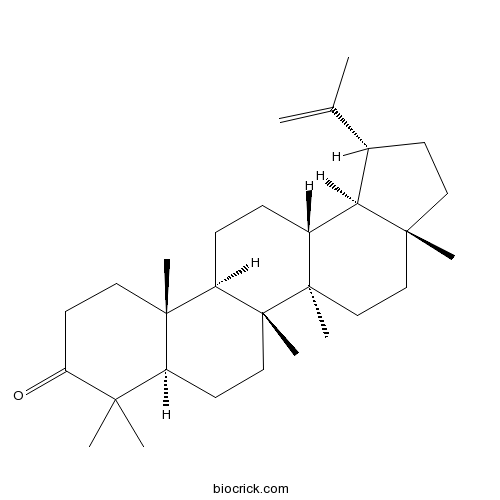Mucuna macrocarpa
Mucuna macrocarpa
1. The products in our compound library are selected from thousands of unique natural products; 2. It has the characteristics of diverse structure, diverse sources and wide coverage of activities; 3. Provide information on the activity of products from major journals, patents and research reports around the world, providing theoretical direction and research basis for further research and screening; 4. Free combination according to the type, source, target and disease of natural product; 5. The compound powder is placed in a covered tube and then discharged into a 10 x 10 cryostat; 6. Transport in ice pack or dry ice pack. Please store it at -20 °C as soon as possible after receiving the product, and use it as soon as possible after opening.
Natural products/compounds from Mucuna macrocarpa
- Cat.No. Product Name CAS Number COA
-
BCN1717
Lupenone1617-70-5
Instructions

-
BCN5891
Daidzin552-66-9
Instructions

The use of cycleave PCR for the differentiation of the rejuvenating herb species Pueraria candollei (White Kwao Khruea), Butea superba (Red Kwao Khruea), and Mucuna macrocarpa (Black Kwao Khruea), and the simultaneous detection of multiple DNA targets in a DNA admixture.[Pubmed: 24660477]
Kwao Khruea, the tuberous roots of Pueraria candollei Graham ex Benth. (White Kwao Khruea), Butea superba Roxb. (Red Kwao Khruea), and Mucuna macrocarpa Wall. (Black Kwao Khruea), are used as rejuvenating herbs in traditional medicine in many tropical countries. Although Kwao Khruea has attracted strong interest because of its rejuvenation properties, each species is used for specific purposes and effects. P. candollei shows estrogenic effects in females. In contrast, B. superba and M. macrocarpa show androgenic effects in males. The potential misidentification of dried tuberous roots of various Kwao Khruea species might cause problems in the drug market, especially when they are reduced into powders. A cycleave PCR, which is based on the sequence of chloroplast matK gene, was developed to differentiate P. candollei, B. superba, and M. macrocarpa. The results showed that cycleave PCR is able to identify specific Kwao Khruea species. A multiplex cycleave PCR was optimized for the simultaneous detection of two different DNA targets in a DNA admixture. The specificity of this technique was confirmed by its ability to distinguish M. macrocarpa from five related Mucuna species. Cycleave PCR can be a specific, sensitive, and rapid method for the identification of medicinal plants and crude plant samples.
Synergistic Apoptosis-Inducing Antileukemic Effects of Arsenic Trioxide and Mucuna macrocarpa Stem Extract in Human Leukemic Cells via a Reactive Oxygen Species-Dependent Mechanism.[Pubmed: 21826188]
The objective of this study was to examine the potential of enhancing the antileukemic activity of arsenic trioxide (ATO) by combining it with a folk remedy, crude methanolic extract of Mucuna macrocarpa (CMEMM). Human leukemia cells HL-60, Jurkat, and Molt-3 were treated with various doses of ATO, CMEMM, and combinations thereof for 24 and 48 h. Results indicated that the combination of 2.5 μM ATO and 50 μg/mL CMEMM synergistically inhibited cell proliferation in HL-60 and Jurkat cell lines. Apoptosis triggered by ATO/CMEMM treatment was confirmed by accumulation of cells in the sub-G(1) phase in cell cycle analyses, characteristic apoptotic nuclear fragmentation, and increased percentage of annexin V-positive apoptotic cells. Such combination treatments also led to elevation of reactive oxygen species (ROS). The antioxidants N-acetyl cysteine (NAC), butylated hydroxytoluene, and α-tocopherol prevented cells from ATO/CMEMM-induced apoptosis. The ATO/CMEMM-induced activation of caspase-3 and caspase-9 can be blocked by NAC. In summary, these results suggest that ATO/CMEMM combination treatment exerts synergistic apoptosis-inducing effects in human leukemic cells through a ROS-dependent mechanism and may provide a promising antileukemic approach in the future.
In vitro and in vivo apoptosis-inducing antileukemic effects of Mucuna macrocarpa stem extract on HL-60 human leukemia cells.[Pubmed: 20713376]
Mucuna macrocarpa Wallich (Leguminosae) is believed to hold blood circulation activating effects, and has been used as a folk remedy in Southeast Asia for the treatment of various hematologic and circulatory-related ailments. The objective of this study was to investigate whether crude methanolic extract of M macrocarpa (CMEMM) possessed antileukemic effects on HL-60, human leukemia cells. CMEMM was prepared from dried stems of this plant, and its apoptosis-inducing effects were investigated using HL-60 cells in vitro and in vivo. With treatment of 25 to 75 μg/mL CMEMM, the in vitro antiproliferative effect on HL-60 cells increased in a dose- and time-dependent manner during the 72-hour treatment period. The concentration of CMEMM that exhibited a 50% growth inhibition (IC(50)) for 72-hour exposure was 36.4 μg/mL. Apoptosis triggered by CMEMM in HL-60 cells was confirmed by the following observations: ( a) characteristic apoptotic nuclear fragmentation, (b) dose-dependent accumulation of sub-G(1) phase in cell cycle analyses, (c) increased percentages of annexin V-positive apoptotic cells, and (d) dose-dependent elevation of active caspase-3. Furthermore, an in vivo tumor growth suppression effect by CMEMM (500 mg/kg/d intraperitoneally) was observed in mouse xenografts. The results suggest that CMEMM exerts antileukemic effects via an apoptotic pathway in HL-60 cells, and could be a candidate for developing antileukemic agents in the future.


